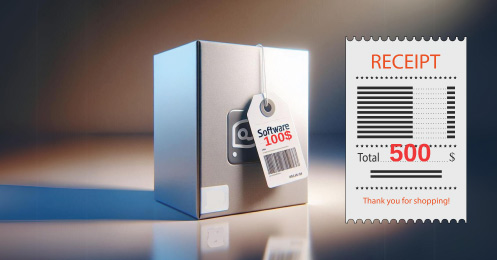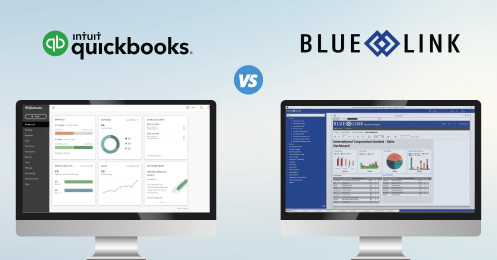Disclaimer: The information and opinions expressed in this blog are based on the author’s best understanding of the updates from HDA’s 2018 Traceability Seminar and do not necessarily reflect the official policies or opinions of the industry in whole.
Blue Link was honored to once again sponsor and attend this year's Healthcare Distribution Alliance (HDA’s) 2018 Traceability Seminar this past October in Washington, D.C. As with the previous year, the show was a mecca for over 500 key players in the pharmaceutical world including pharmaceutical manufacturers, distributors, 3PLs, and service providers - all of whom were looking to gain a better understanding of various industry compliance and regulatory updates.
For Blue Link, the show is an important one to attend to ensure that the continuous development of our all-in-one pharmaceutical software is in-line with the changes, updates, and improvements happening in the industry, especially with DSCSA guidance, in order to provide a relevant and long-term solution to our clients. We thank those who stopped by our table to learn more about our software – we enjoyed meeting you!
If you missed the show, we've got you covered. Take a look below for our recap of critical industry updates.
Key Takeaways:
Results of 2018 Manufacturer Readiness Survey
For the third year, the HDA Research Foundation conducted its annual “Manufacturer Serialization Readiness Survey” aimed to provide insight into the readiness of pharmaceutical manufacturers and repackagers to meet the product serialization requirements defined in the DSCSA. It also provides insight on when distributors can expect to begin receiving serialized product and associated data. The survey was taken by 57 manufacturers and 9 repackagers many of which are the top players in the industry. Here are the key findings:
- 71% indicated that wholesale distributors are currently receiving serialized products. 5% indicated distributors will start receiving serialized product after Nov. 27, 2018 (DSCSA deadline)
- Only 61% of manufacturers are ready to serialize 100% branded products before November 27, 2018
- Only 48% of manufacturers are ready to serialize 100% generic products branded products before November 27, 2018
- 88% of manufacturers asked, plan to aggregate units to case between 2018 and 2023
- Only 40% of suppliers plan to start sending EPCIS data by Nov. 27, 2019 (22% do not know when they will start sending data)
It was made clear that there will be no more deferring of the DSCSA serialization requirements that require both manufacturers and repackagers to provide product serialization by Nov. 27, 2018.
2019 Saleable Returns Requirement
Effective November 27, 2019, distributors are required to verify if a product being returned can be re-sold. In order to do this, they must verify the product identifier, including the standardized numerical identifier, for each sealed homogeneous case of such product or, if such product is not in a sealed homogeneous case, verify the product identifier, including the standardized numerical identifier, on each package.
- 58.8 million units a year are processed as saleable returns for the US Pharmaceutical Industry
- 94% of returns are saleable
- Currently, there are two preferred options proposed for verification of saleable returns
- The manufacturer sends product unit identifiers to the respective distributor for verification
- Verification Router Service (VRS) where a distributor query is routed to appropriate manufacturer database
- It is expected that there will be multiple Verification Router Services and processes used that will need to communicate with each other
- There is a GS1 Standard in development for Verification Requests
DSCSA Guidance and Updates
Attendees were also informed that the below DSCSA guidance related resources were updated by the FDA and are now available. We urge you to read through them as they cover important information.
- Identifying Trading Partners Under the DSCSA
- Key takeaways include detailed definitions of the various pharmaceutical trading partners, licensure and reporting requirements for distributors and 3PLs and how to identify trading partners.
- Product Identifier Requirements Under the DSCSA
- Product Identifiers Under the DSCSA
- This draft guidance is provided to help manufacturers and repackagers understand the requirements to affix or imprint a product identifier on a product and homogenous case they produce. It discusses what products are subject, barcoding requirements, and various Q&A’s.
- Definitions of Suspect Product and Illegitimate Product for Verification Obligations
- This is a must-read for all involved in the pharmaceutical supply chain as it provides very specific definitions of “suspect product” and "illegitimate product” and offers an interpretation of the various terms used to determine if a product is “suspicious” or “illegitimate”.
- Standardization of Data and Documentation Practices for Product Tracing
- A key takeaway of this document is that “Wholesale distributors, dispensers, and repackagers generally must not accept ownership of a product unless the previous owner provides the transaction information, transaction history and transaction statement prior to or at the time of the transaction".
- Waivers, Exceptions, and Exemptions from the Requirements of Section 582 of the Federal Food, Drug, and Cosmetic Act
- This guidance is provided to help the pharmaceutical industry with the process to request a waiver or exception of a product they feel cannot comply or should not have to comply with the product identification requirements set out by the DSCSA.
2018 Barcode Assessment
This past May, the Big 3 Distributors scanned over 37,000 barcodes at the unit level which revealed 3 times the improvement over the 2017 assessment. However, there are still a few issues to be addressed:
- 21% of the industry has adopted the use of 2D barcodes containing the 4 data elements required by DSCSA on packages and 15% on homogeneous cases
- There will be no more FDA extensions for affixing 2D barcodes on units
- Placement of barcodes on packages and cases is still an issue:
- Barcodes are too close to each other
- Not enough white space around barcodes
- Placing labels with barcodes too close to the edge on cases
- Percentage of Serial Numbers in the 2D barcodes lower than the other elements (only about three-quarters have serialization element)
- There is also a high percentage of expiration dates that are not being included in human readable info, even if they are embedded in 2D barcodes.
GS1 Standards
The use of GS1 Standard of EPCIS 1.2 has been adopted by the US pharmaceutical industry for DSCSA interoperability. GS1 US also released the following whitepaper which offers an overview of the progress of 2D barcodes on unit products: 2018 Update: Implementation of DSCSA Serialization Requirements. GS1 is also offering conformance testing for US Trading Partners.
Blue Link’s All-In-One Pharmaceutical Software
As a pharmaceutical wholesale distributor, it is tricky, to say the least, to keep up with these changing rules and deadlines. It is our objective at Blue Link to ensure our solution remains relevant as these changes take place. As we have always done, we will continue to monitor the industry and update our system to meet the changing needs of the pharmaceutical industry. Our current pharmaceutical functionality includes:
- Lot Tracking (Traceability)
- DEA and State License Expiry Date Management
- Landed Cost Tracking
- Secure Online Order Portal
- Serialization
- Order Entry and Invoicing
- Revision Control
- Inventory Control
- AR/AP, GL, Bank Management etc.
- National Drug Code (NDC) Number Tracking
- Contact Management / CRM
- Suspicious Order Monitoring (SOM)
- Transaction History Management
- Controlled Substance Ordering System (CSOS)










